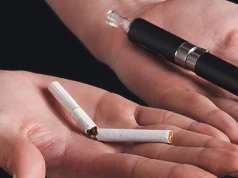Meanwhile, a new draft Decree aims to amend the current regulations on “cigarettes, smoking tobacco, waterpipe tobacco, heated tobacco products, herbal products for smoking, electronic cigarettes, refill container, electronic device imitating smoking, nicotine-free refill container, nicotine-containing smoking substitutes.” It is believed to amend packet definitions, nicotine amounts and labelling requirements, and impose harsh restrictions on vaping products.
With regards to nicotine pouches, the amendment is proposing a maximum nicotine content of 17 mg per consumption unit. This amount may not be sufficient for heavy smokers seeking to quit, as they would have been be used to inhaling higher levels of nicotine. Hence this could inadvertently limit the appeal of the products as smoking cessation aids.
The World Vapers’ Alliance (WVA), is warning against these harsh measures. The group explained that if enacted, the proposed regulations would be limiting tobacco harm reduction (THR) options and hinder access to safer alternatives for smokers.
“While it’s important to ensure the safety and proper labelling of nicotine products, it’s equally crucial to avoid excessive regulation that could impede the availability of harm reduction products for smokers looking to transition away from combustible cigarettes,” said WVA Director Michael Landl.
The period for review and objection on Hungary’s proposal by the European Commission and Member States, ends on 8th November 2023. After this period the Hungarian Government may enact the proposed regulations. Landl added that the Hungarian Government should endorse harm reduction and look at the evidence from countries who have, such as Sweden which as a result is becoming the first smoke-free country across the globe.
The EU is pushing for flavour restrictions
In other news, the WVA also revealed that latest reports indicate possible tighter vape flavour regulations within the European Union. Many MEPs and industry figures are in favour of harsher vape laws in a bid to prevent teen vaping. However THR experts keep underlining that this approach never works, and that it just leads to users purchasing the products on the black market where they are unregulated and possibly unsafe, or worse, just switch back to smoking.
In fact, in Estonia where vape flavours were banned in 2020, evidence has indicated that most vapers kept using them, either by making their own liquids or by turning to the black market. Smoking cessation experts keep reiterating that flavours are essential in helping vapers quit and that actually other steps can be taken to prevent teen vaping.
Teen vaping has everything to do with personal factors
In fact many studies have indicated that teen vaping has a lot to do with personality factors and other individual variables such as lifestyle. In fact those teens who vape are more likely than others to be inclined to try smoking, drinking and use other substances. These behavioural patterns have led to to the infamous Gateway Theory, the theory that vaping leads to smoking and even to cannabis use, and resulting harsh vape regulations such as the ones proposed in Hungary.
Meanwhile THR experts as well as a recent commentary published in the scientific journal Addiction, highlight the importance of educating adult smokers about the relative risks of different nicotine products. Whilst at the same time, they should work towards preventing use by minors. However, teen vaping prevention should not come in the way of making the products available the former.








